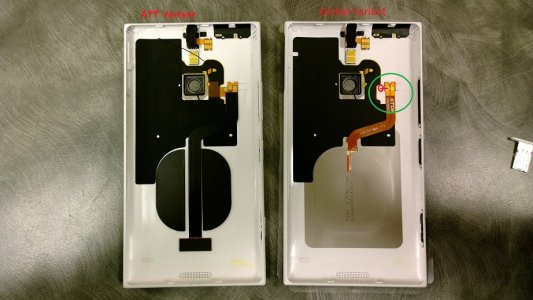Oh, I understand - you're talking about the indicator on the charger, not the 1520 itself. I was under the impression that the device itself charging charging for an instant, then stopped. So, just to confirm, none of you have ever seen the 1520 itself start a charge, then stop, from just having the Qi coil (with no electronics) installed, correct?
There is a recurrent HF AC chirp that starts the process (i.e., the "selection" phase). This is commonly referred to as an "analog ping". During this period, the presence of a receiver is detected (a load of "some sort"). If the Power Transmitter discovers a Power Receiver, the Power Transmitter may extend the Digital Ping, i.e. maintain the Power Signal at the level of the Digital Ping. This causes the system to proceed to the identification & configuration phase. If the Power Transmitter does not extend the Digital Ping, the system shall revert to the initial selection (object detection) phase. During the identification and configuration phase, the Power Transmitter identifies the selected Power Receiver, and obtains configuration information such as the maximum amount of power that the Power Receiver intends to provide at its output. The Power Transmitter uses this information to create a Power Transfer Contract. This Power Transfer Contract contains limits for several parameters that characterize the power transfer in the power transfer phase. At any time before proceeding to the power transfer phase, the Power Transmitter may decide to terminate the extended Digital Ping, e.g. to discover additional Power Receivers. This reverts the system to the selection phase. In the power transfer phase, the Power Transmitter continues to provide power to the Power Receiver, adjusting its Primary Cell (coil) current in response to control data that it receives from the Power Receiver. Throughout this phase, the Power Transmitter monitors the parameters that are contained in the Power Transfer Contract. A violation of any of the stated limits on any of those parameters causes the Power Transmitter to abort the power transfer, returning the system to the selection phase. Finally, the system may also leave the power transfer phase on request of the Power Receiver. For example, the Power Receiver can request to terminate the power transfer, i.e., "battery fully charged", reverting the system to the selection phase, or request to renegotiate the Power Transfer Contract: change to trickle charging the battery using a lower maximum amount of power, reverting the system to the identification & configuration phase. These control packets are sent approximately every 250 ms during normal operation or every 32 ms during large signal changes (i.e., you move the coil). Also during normal operation, the power transmitter sends power packets every 5 seconds. The power transmitter stops supplying power upon receiving an “End Power” message, or if no packets are received for more than 1.25 seconds and the process repeats. While no power is being transmitted, the power transmitter enters a low-power standby mode, but remains active.
The presence of a Qi inductive coil only satisfies the very first part of the start-up sequence. It's possible that the charger's designed to turn on its indicator after an initial analog detection, or any time the transmitter is not in a low-power state. If that's the case, that could explain why the light on the charger blinks with just a coil present (no electronics). However, I would expect it to repeatedly blink every 1.25 seconds (or faster, since no communications are actually taking place between the "dead" coil and the power transmitter.
As for the "dashlight bulb" blinking - I was a little freaked-out by that until I realized you must be using a self-contained Qi coil circuit (i.e., from a Lumia 920), not just the Qi coil by itself. If not, and you had a charging plate that was inducing enough of a charge to light a bulb with JUST the coil attached, you'd essentially have an induction cook-top, not a cell phone charger.
Still, this is starting to get awfully deep. While I would love to hope that the Qi electronics survived AT&T's meddling, I've seen the two boards side-by-side, and I'm certain that the AT&T units I've looked at do not have Qi detection, negotiation or rectification electronics installed in them to support the coil-only scenario.
SonarTech


